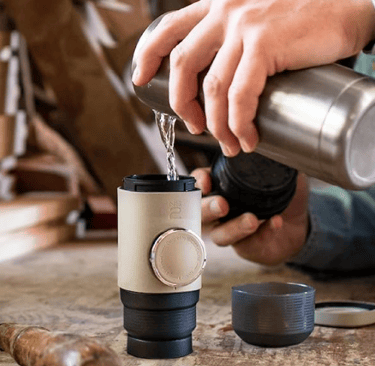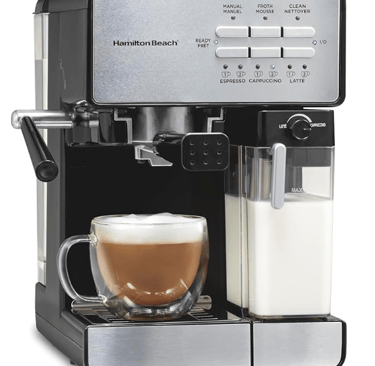How Altitude Affects Coffee Flavor: Beans from the Heights
BLOG NEWS
10/13/20255 min read


Understanding Altitude and Coffee Growing Regions
Altitude plays a critical role in the cultivation of coffee, influencing not only the growth of coffee plants but also the flavor profile of the beans they produce. The term "altitude" in coffee growing refers to the vertical distance above sea level where coffee is cultivated. Typically, coffee grown at higher elevations—generally above 1,200 meters (approximately 4,000 feet)—is regarded as superior in quality. The reasons for this association include a combination of climate, temperature, and soil characteristics that affect the development of the coffee cherries.
Various coffee-growing regions around the world exhibit different altitude characteristics. For instance, Colombia is renowned for its mountainous terrain, particularly in regions such as Quindío and Antioquia, where coffee farms often thrive at elevations ranging from 1,200 to 2,000 meters. Similarly, Ethiopia, considered the birthplace of coffee, features high-altitude farms in its Sidamo and Yirgacheffe regions, which lie between 1,500 and 2,200 meters. Costa Rica also showcases high-altitude coffee cultivation, particularly in the Tarrazú region, where the elevations range from 1,200 meters to over 1,800 meters.
The environmental conditions at these elevated locations contribute significantly to the unique characteristics of the coffee beans. Higher altitudes generally result in cooler temperatures, which slow down the maturation process of the coffee cherries. This slower development allows for a more complex flavor profile to emerge, characterized by brighter acidity and enhanced sweetness. Additionally, the volcanic soil commonly found in these regions is rich in minerals, further supporting the growth of healthy, flavorful coffee plants. The geographical diversity in these high-altitude areas encapsulates a myriad of microclimates, fostering distinct flavor nuances in coffee beans produced.
The Science of Altitude and Flavor Development
Understanding the relationship between altitude and coffee flavor involves exploring several biochemical processes that occur during the growth of coffee cherries. As coffee plants ascend into higher elevations, they encounter varying environmental conditions—most notably changes in temperature, sunlight availability, and soil composition—that collectively influence the maturation of the beans.
At elevated altitudes, temperatures are typically lower, which slows down the growth rate of coffee cherries. This slower maturation allows for a longer period of development, enabling the cherries to absorb essential nutrients more effectively from the soil. The prolonged growth phase created by high altitude contributes to enhanced acidity and a more complex flavor profile. Consequently, coffees grown in these elevated regions tend to exhibit vibrant notes and intricate flavors often absent in beans cultivated at lower elevations.
Sunlight also plays a critical role. Higher altitudes often mean more intense sunlight, which can stimulate the plant's photosynthesis process. This encourages the production of flavor compounds and oils that contribute to the overall sensory perception of the coffee. Soils at these altitudes typically are well-drained and fertile, which further enhances nutrient uptake and, therefore, flavor development.
Ultimately, the distinctive profiles of specialty coffees are a result of the unique combination of these altitude-specific factors. Coffees sourced from higher elevations can reveal nuances that make them sought after in the specialty market, as they embody a depth of flavor complexity often described as bright, floral, or fruit-forward. This highlights why coffee connoisseurs often prefer beans cultivated in the heights, emphasizing the significant impact of altitude on coffee flavor development.
Tasting Notes: High-Altitude vs. Low-Altitude Coffee
The altitude at which coffee beans are cultivated significantly influences their flavor profile, leading to distinctive tasting notes that can vary widely between high-altitude and low-altitude coffees. High-altitude coffees, typically grown at elevations above 1,200 meters, are renowned for their bright acidity and complex flavor profiles. The cooler temperatures and increased sunlight exposure in these regions not only slow the maturation of coffee cherries but also enhance the development of sugars and acids within the beans. As a result, high-altitude coffees often present a vibrant array of fruity and floral notes. For instance, coffees from regions like Colombia’s Huila and Ethiopia’s Yirgacheffe frequently exhibit tasting notes of citrus, berries, and jasmine, making them highly sought after among specialty coffee enthusiasts.
Conversely, low-altitude coffees, generally found below 800 meters, often produce beans characterized by heavier, more robust flavors. The warmer climate accelerates the ripening process, leading to lower acidity levels. As a result, these coffees tend to develop earthier and spicier notes. Popular regions known for low-altitude coffee include Brazil and Sumatra, where beans often feature dark chocolate, nutty undertones, and rich body. For example, Brazilian coffees are frequently associated with a smooth, chocolate-like flavor, while Sumatran varieties display earthy and herbal notes, illustrating a stark contrast to the brightness found in high-altitude coffees.
This disparity in flavor profiles highlights the importance of altitude in coffee cultivation. Understanding these differences helps consumers make informed choices based on their flavor preferences. Whether one favors the complex, fruity brightness of high-altitude varieties or the rich, earthy tones of low-altitude beans, the influence of altitude is a crucial aspect of the coffee tasting experience.
Choosing Your Coffee: How Altitude Influences Your Brew
When selecting coffee, it is essential to consider how altitude affects flavor profiles. High-altitude coffees, typically grown at elevations above 1,200 meters, often exhibit distinct characteristics due to the cooler temperatures and slower maturation in these environments. These conditions contribute to beans that are more acidic and complex, making them a favorite among coffee enthusiasts. To identify high-altitude coffee, look for labels that mention specific regions known for their elevated growing conditions, such as Colombian Coffee from the Andes or Ethiopian Yirgacheffe.
One practical recommendation when choosing coffee is to explore single-origin beans, which usually showcase the unique flavor attributes of their growth environment. For example, coffees sourced from Guatemala's Antigua region often present rich, chocolatey notes with a hint of spice, while those from Kenya may pop with vibrant berry flavors. These flavor profiles are largely influenced by the altitude at which the beans are cultivated. Therefore, try to seek out specific harvest information and altitude references on packaging to better understand the potential flavor outcome.
In addition to selecting the right beans, experimenting with brewing techniques can significantly enhance your coffee experience. High-altitude coffees benefit from methods that emphasize their vibrant acidity and complex flavors. Utilizing a pour-over technique can allow for better control over extraction, while a French press may help in showcasing the depth and body of these beans. It is advisable to start with a slightly coarser grind and adjust based on your preference. Remember, brewing water temperature should ideally be around 90-94°C (194-201°F) to preserve the delicate flavors that high-altitude coffees offer.
Ultimately, investing time in selecting and brewing your coffee with consideration to altitude can elevate your daily routine. Taste and enjoy the intricate differences that altitude imparts to your favorite brews, and explore various varietals to truly appreciate the exceptional qualities of high-altitude coffee.
One of our favorite coffee/espresso machines we would recommend...
Hamilton Beach Slide and Lock Espresso Machine


Click 'Shop Now!' to find on Amazon now!
🛠️ Specification
The Hamilton Beach Slide & Lock Espresso Machine features a 15‑bar pump, designed to provide sufficient pressure for espresso extraction with a decent crema. It uses a patented “Slide & Lock” portafilter system: you slide the portafilter in from the front and lock it in place on the side, which is intended to simplify the portafilter handling compared to more traditional brew‑head lock systems. The machine has two spouts in the portafilter so you can brew either a single or double shot of espresso simultaneously. It also includes a built‑in swiveling frothing wand with an adjustable steam dial for steaming or frothing milk to make lattes, cappuccinos, etc. A pressure dial is visible on the front of the machine so you can monitor pressure while brewing. There is a removable water reservoir to make refilling and cleaning easier. The design is relatively compact, with retro style cues; dimensions are modest so it doesn’t take up a huge amount of counter space. It comes with accessories like a scoop and tamper, and both single and double stainless steel filter baskets. The wattage is moderate (around 1050‑1100W depending on version) which helps keep price down while delivering enough power for basic espresso extraction.
